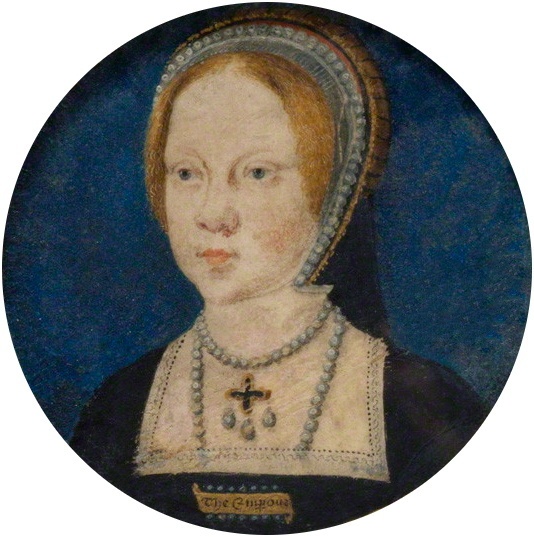Queen Mary I of England was the first woman to rule in her own right as Queen. She lived a difficult life as the daughter of Henry VIII and Catherine of Aragon — their only living child born in 1516.
During her childhood, Henry broke with the Catholic Church in order to declare his marriage to Catherine invalid and to marry Anne Boleyn. Catherine had previously been married to Henry’s brother, Arthur, before his ultimately death. Catherine always stated the marriage was unconsummated which allowed her to marry Henry.
During their marriage, Mary was their only surviving child out of many pregnancies, and Henry was driven by the desire to have a son and heir. After the divorce, Mary became illegitimate and refused to recognise her father as the head of the Church. She was stripped of her titles and never saw her mother again. Mary eventually came to recognise her father as head of the Church in England and was welcomed back to court. In 1537, she was named heir to the throne after her brother, Edward.
After her father’s death, her brother Edward ruled from 1547-1553. Edward died of tuberculosis at the age of 15 and Mary was set to become Queen. Prior to his death, Edward, a staunch Protestant, had made plans to deny Mary the throne. Lady Jane Grey, a distant relative, became Queen for several days before overwhelming support for Mary ended her short reign. As a devout Catholic, one of Mary’s first orders of business as Queen was to re-establish the Catholic Church in England. Overnight, Protestants became heretics, hunted down and burned at the stake. She became known as “Bloody Mary” as hundreds of protestants died at the stake when she revived heresy laws.
Her second order of business was to marry Philip II of Spain. This was an unpopular choice as many distrusted the Spanish. However, on the back on a victory against the rebellion of Sir Thomas Wyatt, Mary married Philip.
Mary’s rule was not a happy one. As hundreds died at the stake, people became disillusioned with her vision of England. Phillip was not as enamored of her as she was of him, and war with France was not successful. Eventually, Mary died in November 1558 and her dreams of a Catholic England died with her. Phillip was in Brussels at the time after the news of his father’s death, so Mary died alone.

